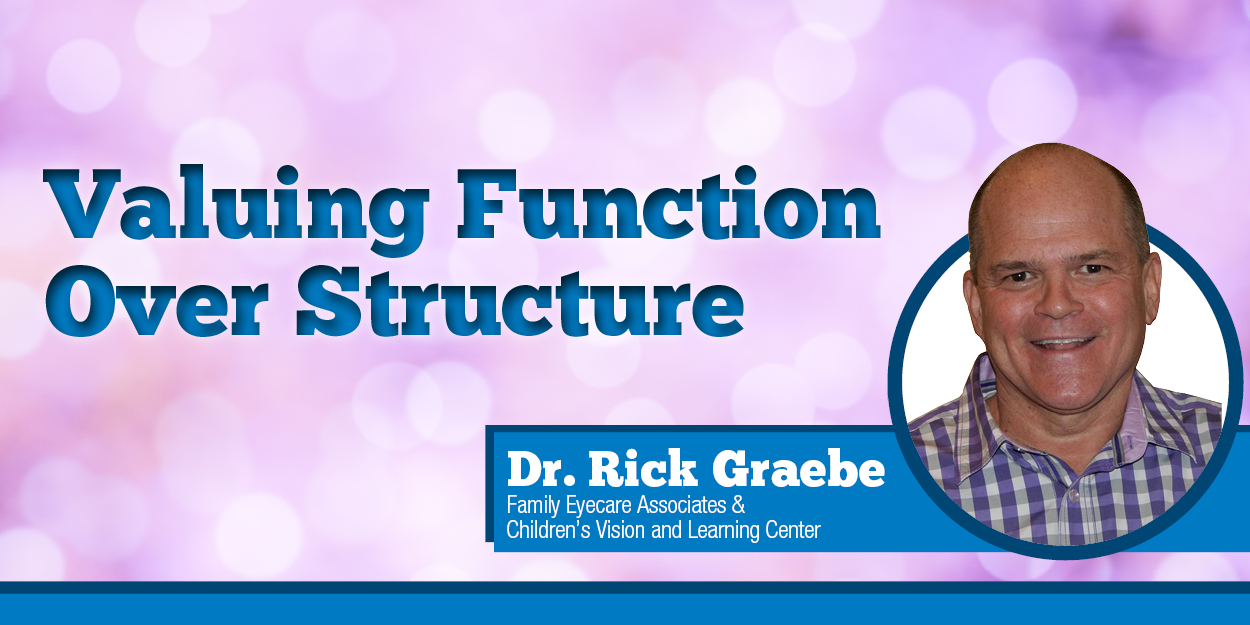Valuing Function Over Structure
“This is the essence of what’s wrong with healthcare today,” Dr. Rick Graebe said. “Three-quarters of our training as doctors is structure-based.”
Which makes sense because doctors have to understand structure first. A heart surgeon must understand how that organ works. Same with an ear, nose and throat specialist who must know the inner workings of those organs.
But we humans live in a functional world. Our bodies must perform – must function – in order for us to interact with our environment.
Dr. Graebe, a behavioral optometrist in Versailles, observes this structure-function disparity all the time in his practice.
“My personal exam starts where everyone else’s stops off,” he said, comparing the eye exam he administers with those offered in traditional practices.
Recently, a family with a history of lazy eye brought their 2-year-old son in for a precautionary eye exam. Tests showed that the child had a central cataract in each eye. He was seeing the world through a cloudy lens.
“Every eye doctor in the world would diagnose that because it’s strictly a structural issue,” Dr. Graebe said.
But the visual system requires more than just good eyesight to function adequately in our modern world, which places a premium on close-up work like reading and working on a computer.
Seeing is just the first step in the visual system. In reading, for instance, the eyes must track in unison across the page and the brain must process what the eyes see.
Then the visual system must integrate that data with the body’s other senses. Using another analogy, Dr. Graebe describes the act of catching a tennis ball.
The visual system must recognize that it’s a ball, then conclude that it’s soft enough to catch with bare hands. It must find the ball in space (depth perception) and then work with the other senses to complete the catch.
One glitch along the line and you won’t catch that ball. That is the essence of function. Same with reading and close-up work.
Dr. Graebe always examines the entire visual system. When shortcomings are detected, he offers Vision Therapy, a kind of physical therapy for the eyes, brain and body.
“I am not serving my patients if I’m not helping their visual system function well,” he said.
“Wanting to serve my patients is what led me to take classes, to research and to learn more about Vision Therapy. At first, I just put my toe in the water. Once I saw that I was having success with patients, I jumped in full body. With this treatment, I’m all in.”
Dr. Rick Graebe
Family Eyecare Associates &
Children’s Vision and Learning Center
105 Crossfield Drive, Versailles
myfamilyvision.com • (859) 879-3665

